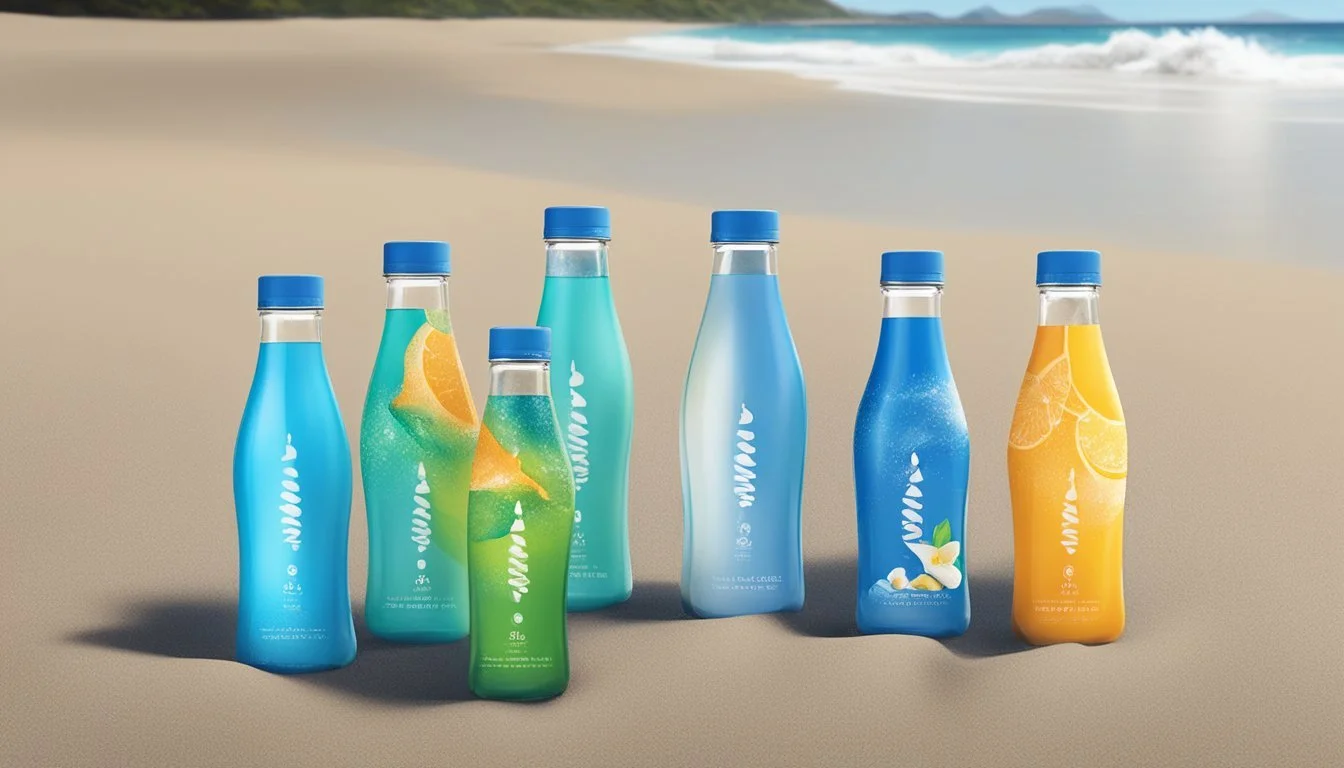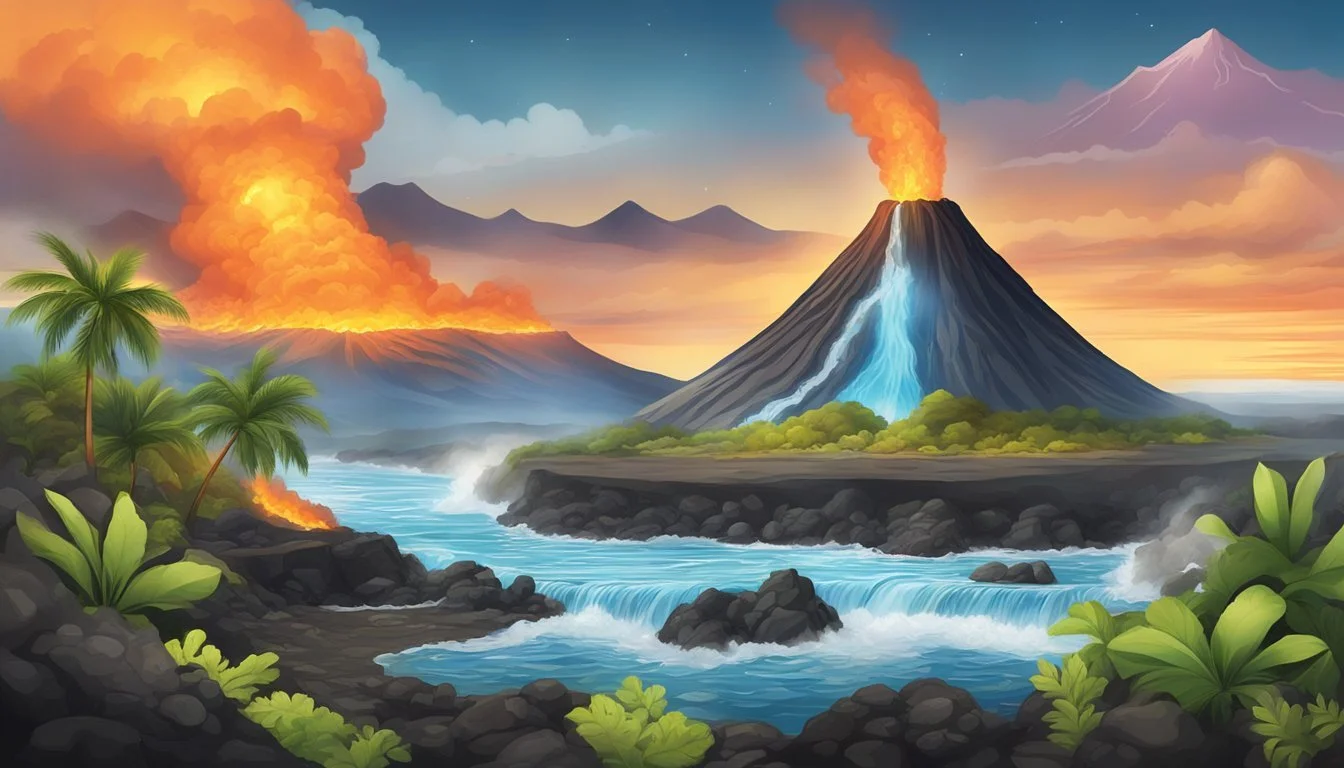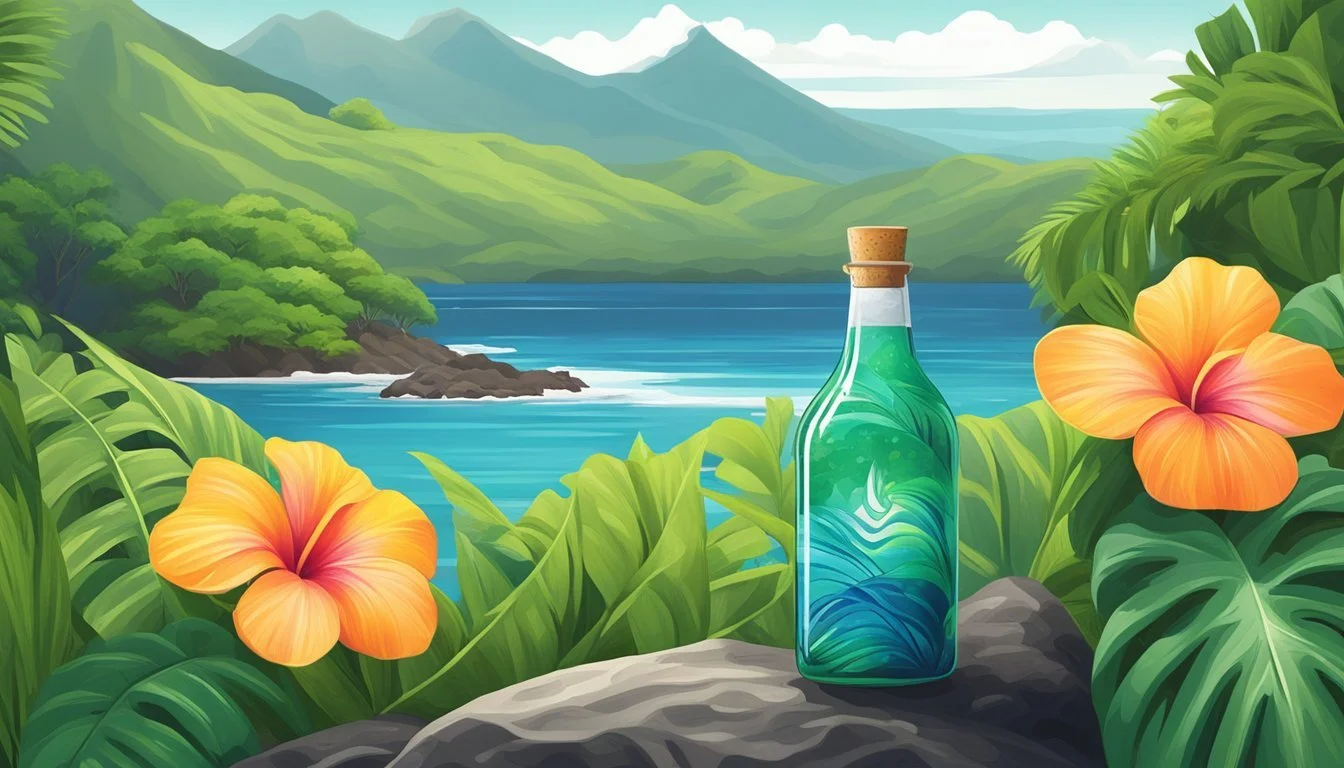LIFEWTR vs. Hawai’i Volcanic
Which Bottled Water Reigns Supreme?
When it comes to premium bottled water, two brands stand out: LIFEWTR and Hawai'i Volcanic. Each offers unique qualities that cater to different preferences. LIFEWTR is known for its pH-balanced water infused with electrolytes, packaged in 100% recycled plastic bottles. Hawai'i Volcanic, on the other hand, boasts naturally alkaline water from Hawaiian volcanic rock, offering a pure and refreshing taste.
Taste is a highly subjective experience. While some may favor the crisp and clean taste of LIFEWTR, others might appreciate the natural minerals and slight sweetness found in Hawai’i Volcanic water. For those who value eco-friendly packaging and a pH-balanced formula, LIFEWTR might be the better choice; alternatively, those drawn to natural sourcing and mineral content may prefer Hawai’i Volcanic.
Beyond taste, consumers are also becoming more conscious of environmental impacts and the benefits of natural versus purified water. LIFEWTR prides itself on using recycled plastic, while Hawai’i Volcanic promotes sustainability through naturally filtered spring water. This comparison aims to provide a clear understanding to help you decide which bottled water aligns better with your preferences and values.
Comparing Origins and Natural Processes
Hawai’i Volcanic and LIFEWTR offer unique bottled water experiences rooted in distinct sources and crafted through different natural processes. Each brand embodies its own heritage and innovative approach to delivering premium water.
The Rich Heritage of Hawai'i's Mauna Loa
Hawai’i Volcanic water originates from the Mauna Loa volcano on the Big Island. This iconic landmark’s pristine ecosystem and volcanic activity play a crucial role in the water’s quality.
Collected from snowmelt and rain that filter through thousands of feet of volcanic rock, the water is naturally purified. This process enriches the water with a unique mineral composition. The volcanic rock acts as a natural filtration system, ensuring the water is exceptionally clean and pure.
Hawai‘i Volcanic water also benefits from the region's high rainfall, particularly in Hilo, making it abundant in fresh water and minerals.
The Art of Crafting LIFEWTR
LIFEWTR is a purified water brand artfully crafted to enhance hydration. Unlike Hawai‘i Volcanic, it doesn’t originate from a single natural source but is purified through an intensive process.
Using advanced filtration techniques such as reverse osmosis, microfiltration, and UV-light treatment, LIFEWTR achieves high purity levels. The water is typically characterized by a balanced pH level, often between 6.4 to 7.4.
LIFEWTR also incorporates electrolytes like calcium chloride, magnesium sulfate, and potassium bicarbonate to improve taste and hydration. This meticulous process ensures consistency and quality in every bottle.
In summary, Hawai’i Volcanic leverages natural volcanic processes, while LIFEWTR enhances purity through sophisticated filtration and mineral addition.
Chemical Composition and Health Benefits
When comparing LIFEWTR and Hawai’i Volcanic, it's essential to examine the minerals and electrolytes each brand offers and understand their pH balance to gauge their health benefits.
Minerals that Matter
LIFEWTR and Hawai’i Volcanic provide key minerals that play vital roles in maintaining hydration and promoting overall wellness.
LIFEWTR includes minerals like calcium, magnesium, and potassium. These are added for a balanced taste and to help consumers meet their daily mineral intake. Magnesium aids muscle function and nerve transmission, while calcium supports bone health.
Hawai’i Volcanic, sourced from Hawaiian Volcanic sources, naturally contains silica, sodium, and trace minerals. Silica is recognized for aiding in skin and joint health. The volcanic filtration process enriches the water with these essential minerals providing a unique health-boosting profile not typically found in standard bottled waters.
Importance of Electrolytes and pH Balance
Both brands emphasize electrolyte content and pH balance, which are crucial for optimal hydration and bodily function.
LIFEWTR is fortified with added electrolytes to enhance its taste and support intricate bodily functions. These electrolytes maintain muscle efficiency, prevent dehydration, and support overall cellular activity.
Hawai’i Volcanic boasts an alkaline pH of 8.8, promoting the neutralization of body acidity and potentially offering antioxidants. Alkaline water enthusiasts claim these benefits can improve digestion, boost metabolism, and promote better hydration compared to neutral pH water.
Maintaining an optimal pH balance is essential for body processes. The added electrolytes in LIFEWTR and the natural alkalinity of Hawai’i Volcanic both cater to consumers seeking both hydration and health benefits.
Taste and Texture
When it comes to bottled water, the taste and texture play significant roles in consumer preference. Both LIFEWTR and Hawai’i Volcanic offer distinct sensory experiences that distinguish them in the market.
Sensory Experience of LIFEWTR
Taste: LIFEWTR has a clean, crisp taste that is often described as neutral with a slight mineral finish. The brand claims to include added electrolytes for taste, enhancing its flavor subtly without being overpowering.
Texture: The texture of LIFEWTR is smooth, contributing to a refreshing drinking experience. The flow is consistent, neither too thick nor too thin, making it pleasurable to drink. This balance is achieved through meticulous purification processes.
Sensory Experience of Hawai'i Volcanic
Taste: Hawai’i Volcanic water offers a unique taste derived from its natural filtration through volcanic rock. The water has a slightly sweet and mineral-rich flavor, attributed to the natural minerals it retains. This provides a distinctive character that many find appealing.
Texture: The texture is smooth and silky, which complements its naturally sourced flavor. The flow is effortless and refreshing, contributing to an overall satisfying drinking experience that highlights the purity of its volcanic origins.
Environmental Impact and Sustainability
Environmental impact and sustainability are critical factors when considering the overall benefits of bottled water. Both LIFEWTR and Hawai’i Volcanic Water emphasize their efforts in these areas, but they approach it differently.
Purity and Filtration Processes
LIFEWTR uses a triple-filtration process that focuses on removing impurities and enhancing water quality. This type of filtration often includes reverse osmosis and ozone, ensuring the final product is both clean and taste-neutral.
Hawai’i Volcanic leverages natural volcanic filtration, which filters water through porous volcanic rock. This process naturally enhances the water with minerals and provides a unique taste.
Natural filtration contributes to the water's purity, often requiring fewer artificial steps compared to industrial filtration processes. Consumers seeking naturally sourced and filtered water may prefer Hawai’i Volcanic due to its minimal processing and environmental footprints.
Packaging and Environmental Conservation
LIFEWTR utilizes rPET packaging, which stands for recycled polyethylene terephthalate. This material is made from recycled plastic bottles, significantly reducing waste and conserving resources. LIFEWTR's packaging also demonstrates a commitment to the circular economy by reducing the dependence on virgin plastics.
Hawai’i Volcanic emphasizes sustainability throughout its production chain. Their water bottling process involves sustainable sourcing practices, including bottling less than 0.003% of the water from the local aquifer to ensure minimal environmental impact. The company also integrates eco-friendly packaging options and participates in conservation efforts, such as forest preserves, to protect natural resources.
Comparing these efforts shows both brands' commitment to reducing environmental impact through innovative packaging solutions and responsible sourcing. While LIFEWTR focuses on recycling and reusability, Hawai’i Volcanic incorporates broader conservation initiatives that support ecosystems surrounding their source locations.
Social Responsibility and Brand Initiatives
LIFEWTR and Hawai'i Volcanic engage in various social responsibility efforts, focusing on community support, educational projects, water accessibility, and strategic brand partnerships.
Community Support and Educational Projects
LIFEWTR is dedicated to fostering creativity through educational opportunities. They have initiated several projects aimed at supporting budding artists, often featuring their work on bottle labels. This unique initiative not only empowers artists but also enhances the brand's appeal.
Hawai'i Volcanic emphasizes Hawaiian culture and values through its Kokua Initiative. This program supports local communities by funding projects that preserve natural resources and traditional practices. By promoting sustainability and education within these communities, Hawai'i Volcanic helps sustain the cultural heritage of Hawaii.
Water Accessibility and Brand Partnerships
LIFEWTR collaborates with organizations like Whole Foods Market to promote water accessibility. Through partnerships, they contribute to various campaigns aimed at providing clean water to underserved areas. Collaboration with initiatives such as PumpAid in Malawi, Africa, showcases their commitment to global water accessibility.
Hawai'i Volcanic focuses on sustainability throughout its production process, sourcing water responsibly. They aim to conserve the environment and ensure water accessibility without depleting local resources. By aligning with local and international partners, Hawai'i Volcanic dedicates efforts to preserving water quality and availability for future generations.
Consumer Considerations
When choosing between LIFEWTR and Hawai’i Volcanic, it’s important to examine factors such as cost, convenience, and availability. Each of these aspects can significantly influence a consumer’s purchasing decision.
Cost, Convenience, and Availability
Cost: LIFEWTR typically falls within the mid-to-high price range for premium bottled water. They are often sold in packs and may be available at a slight discount when purchased in bulk or through subscription services. Hawai’i Volcanic water, sourced from volcanic springs, may be positioned slightly higher in cost due to its unique origin and production processes.
Convenience: Both brands offer convenience in terms of packaging and distribution. LIFEWTR is available in various sizes and bottle types, making it suitable for different consumption needs. Hawai’i Volcanic also provides different packaging options, including eco-friendly bottles, which might appeal to environmentally conscious consumers.
Availability: LIFEWTR enjoys wide distribution across the United States, being readily available in supermarkets, convenience stores, and online. Hawai’i Volcanic, although somewhat less widespread than LIFEWTR, is still accessible through both specialty stores and major online retailers. Subscription options and direct shipping can further enhance availability for both brands, ensuring a steady supply for regular consumers.
Quality Assurance and Certifications
Quality assurance and certifications play a crucial role in setting apart premium bottled waters like LIFEWTR and Hawai’i Volcanic from the competition. These measures ensure the safety, cleanliness, and consistency of the water.
Standards and Benchmarks for Premium Water
Premium bottled water brands often adhere to specific standards and benchmarks to guarantee quality. LIFEWTR and Hawai’i Volcanic utilize advanced processes, including Hazard Analysis and Critical Control Points (HACCP), to monitor and control critical points during production. Such measures help in maintaining water quality and safety.
Certifications from reputable organizations, like the International Bottled Water Association (IBWA), further attest to the high standards these brands uphold. These certifications require regular quality checks and adherence to strict guidelines. Consistent compliance ensures that the water remains free from contaminants and maintains its desired pH levels, TDS (total dissolved solids), and other essential properties.
Enhanced water offerings from both brands also undergo voluntary quality assurance processes, aiming for optimal health benefits. By aligning with these rigorous standards, both LIFEWTR and Hawai’i Volcanic ensure their consumers receive a product of superior quality, aligned with the expectations of premium water.
Conclusion
In comparing LIFEWTR and Hawai’i Volcanic bottled waters, each brand offers unique characteristics that appeal to different consumer preferences.
LIFEWTR provides a slightly alkaline pH range of 6.4 to 7.4. It stands out with its crisp taste and effective marketing, targeting those who seek both hydration and visual appeal.
Hawai’i Volcanic, on the other hand, boasts natural filtration through volcanic rock, resulting in water rich in minerals. Its eco-friendly practices and pristine source contribute to its unique appeal.
Pros and Cons:
LIFEWTR:
Pros: Crisp taste, premium marketing, slight alkalinity
Cons: Common characteristics, environmental impact due to plastic usage
Hawai’i Volcanic:
Pros: Rich in minerals, natural filtration, eco-friendly practices
Cons: Availability may be limited, higher cost
The pH levels, mineral content, and branding set these waters apart, making them suitable for different tastes and priorities. Both brands aim to provide high-quality hydration, yet they do so through distinct approaches.
Whether you prefer the artistic presentation of LIFEWTR or the natural purity of Hawai’i Volcanic, your choice will depend on personal preferences regarding taste, source, and environmental impact. Both brands cater to discerning consumers who seek quality in their hydration options.
More About LIFEWTR
Icelandic Glacial vs LIFEWTR: Which Bottled Water is Better?
LIFEWTR vs Kirkland Signature: Which Bottled Water is Better?
LIFEWTR vs Mountain Valley Spring Water: Which Bottled Water is Better?
LIFEWTR vs Richard's Rainwater: Which Bottled Water is Better?
LIFEWTR vs Whole Foods Italian Still Mineral water: Which Bottled Water is Better?
More About Hawai’i Volcanic
Acqua Pana vs Hawaii Volcanic: Which Bottled Water is Better?
Antipodes vs Hawaii Volcanic: Which Bottled Water is Better?
Aqua Carpatica vs Hawaii Volcanic: Which Bottled Water is Better?
Arrowhead vs Hawaii Volcanic: Which Bottled Water is Better?
Boxed Water vs Hawaii Volcanic: Which Bottled Water is Better?
Castle Rock vs Hawaii Volcanic: Which Bottled Water is Better?
Core Hydration vs Hawaii Volcanic: Which Bottled Water is Better?
Deer Park vs Hawaii Volcanic: Which Bottled Water is Better?
Hawaii Volcanic vs 1907water: Which Bottled Water is Better?
Hawaii Volcanic vs Alkaline88: Which Bottled Water is Better?
Hawaii Volcanic vs Big Chill: Which Bottled Water is Better?
Hawaii Volcanic vs BodyArmor: Which Bottled Water is Better?
Hawaii Volcanic vs Cascade Mountain: Which Bottled Water is Better?
Hawaii Volcanic vs CBD Living: Which Bottled Water is Better?
Hawaii Volcanic vs Crystal Geyser: Which Bottled Water is Better?
Hawaii Volcanic vs Crystal Lake: Which Bottled Water is Better?
Hawaii Volcanic vs Essence pH10: Which Bottled Water is Better?
Hawaii Volcanic vs Kirkland Signature: Which Bottled Water is Better?
Hawaii Volcanic vs Liquid Death: Which Bottled Water is Better?
Hawaii Volcanic vs Open Water: Which Bottled Water is Better?
Hawaii Volcanic vs Proud Source: Which Bottled Water is Better?
Hawaii Volcanic vs Pure Life: Which Bottled Water is Better?
Hawaii Volcanic vs Purely Sedona: Which Bottled Water is Better?
Hawaii Volcanic vs Richard's Rainwater: Which Bottled Water is Better?
Hawaii Volcanic vs Simple Truth: Which Bottled Water is Better?
Hawaii Volcanic vs Talking Rain AQA: Which Bottled Water is Better?
Hawaii Volcanic vs Weird Water: Which Bottled Water is Better?
Hawaii Volcanic vs Whole Foods 365: Which Bottled Water is Better?
Hawaii Volcanic vs Whole Foods Italian Still Mineral water: Which Bottled Water is Better?
Hawaiian Springs vs Hawaii Volcanic: Which Bottled Water is Better?
Ice Mountain vs Hawaii Volcanic: Which Bottled Water is Better?
Icelandic Glacial vs Hawaii Volcanic: Which Bottled Water is Better?
Just Water vs Hawaii Volcanic: Which Bottled Water is Better?
Mountain Valley Spring Water vs Hawaii Volcanic: Which Bottled Water is Better?
Nestle Pure Life vs Hawaii Volcanic: Which Bottled Water is Better?
Poland Spring vs Hawaii Volcanic: Which Bottled Water is Better?
San Pellegrino vs Hawaii Volcanic: Which Bottled Water is Better?
Smartwater vs Hawaii Volcanic: Which Bottled Water is Better?
Solan de Cabras vs Hawaii Volcanic: Which Bottled Water is Better?
Topo Chico vs Hawaii Volcanic: Which Bottled Water is Better?
Zephyrhills vs Hawaii Volcanic: Which Bottled Water is Better?










